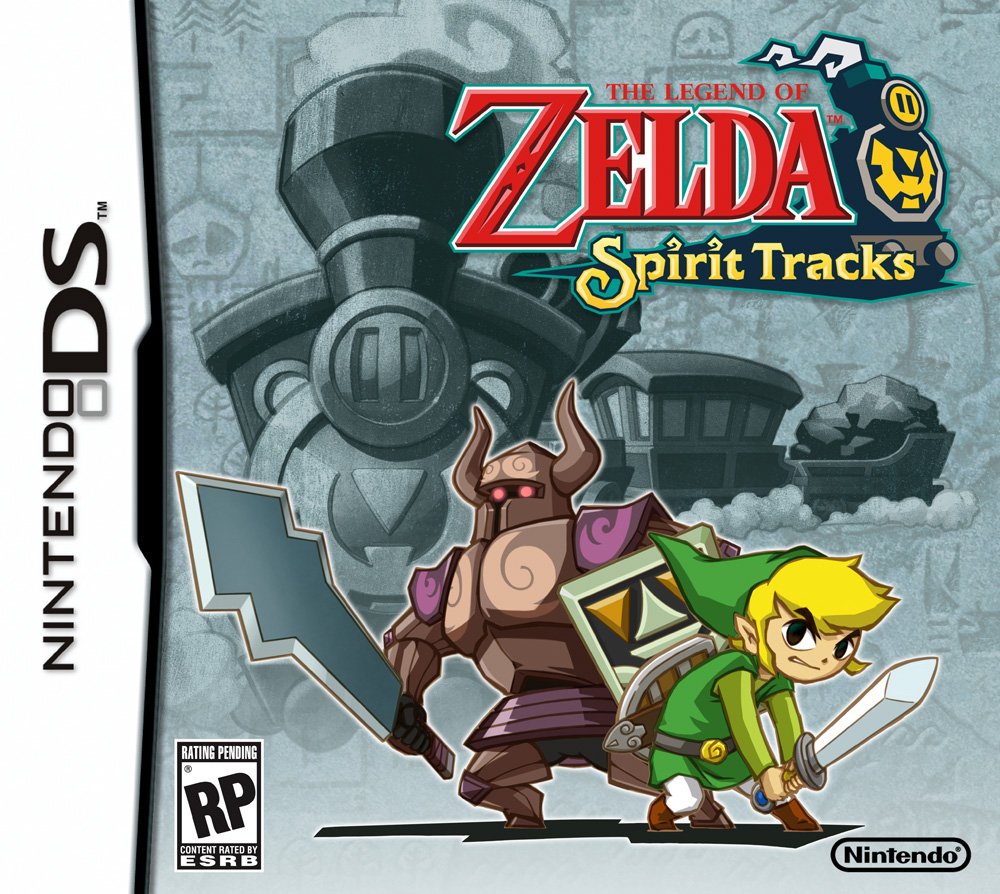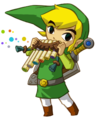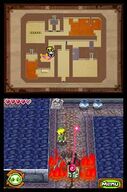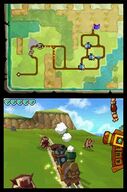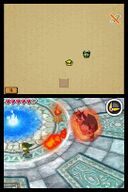Spirit Tracks Staff: Difference between revisions
No edit summary |
No edit summary |
||
| Line 38: | Line 38: | ||
| Map/Object Design || [[Takuro Shimizu]]<br/>[[Yohei Izumi]]<br/>[[Shunichi Shirai]]<br/>[[Shinko Takeshita]]<br/>[[Hanako Hisada]]<br/>[[Yoshihisa Morimoto]]<br/>[[Miki Aoki]]<br/>[[Yoko Tanaka]] | | Map/Object Design || [[Takuro Shimizu]]<br/>[[Yohei Izumi]]<br/>[[Shunichi Shirai]]<br/>[[Shinko Takeshita]]<br/>[[Hanako Hisada]]<br/>[[Yoshihisa Morimoto]]<br/>[[Miki Aoki]]<br/>[[Yoko Tanaka]] | ||
|- | |- | ||
| Map Unit Design || Kong Youngseok<br/>Jun Tanaka<br/>Yosuke Tamori<br/>Jumpei Yamashita<br/>Yuki Kaneko | | Map Unit Design || [[Kong Youngseok]]<br/>[[Jun Tanaka]]<br/>[[Yosuke Tamori]]<br/>[[Jumpei Yamashita]]<br/>[[Yuki Kaneko]] | ||
|- | |- | ||
| Effects Design || Haruyasu Ito | | Effects Design || [[Haruyasu Ito]] | ||
|- | |- | ||
| UI Design || Seita Inoue | | UI Design || [[Seita Inoue]] | ||
|- | |- | ||
| Design Support || Yoshiki Haruhana | | Design Support || [[Yoshiki Haruhana]] | ||
|- | |- | ||
| Cinema Scene Director || Naoki Mori | | Cinema Scene Director || [[Naoki Mori]] | ||
|- | |- | ||
| Cinema Scene Planning || Hiroyasu Kuwabara<br/>Shigeki Yoshida<br/>Daisuke Nobori<br/>Motoaki Fukuda<br/>Shintaro Kashiwagi<br/>Hirotatsu Ishida<br/>Yugo Sumi<br/>Akihiro Shitara<br/>Nobusada Takahashi<br/>Shinichi Ogata<br/>Takahiro Uchida<br/>Yoshimi Tanaka<br/>Yusuke Hirota<br/>Emiko Saiki | | Cinema Scene Planning || [[Hiroyasu Kuwabara]]<br/>[[Shigeki Yoshida]]<br/>[[Daisuke Nobori]]<br/>[[Motoaki Fukuda]]<br/>[[Shintaro Kashiwagi]]<br/>[[Hirotatsu Ishida]]<br/>[[Yugo Sumi]]<br/>[[Akihiro Shitara]]<br/>[[Nobusada Takahashi]]<br/>[[Shinichi Ogata]]<br/>[[Takahiro Uchida]]<br/>[[Yoshimi Tanaka]]<br/>[[Yusuke Hirota]]<br/>[[Emiko Saiki]] | ||
|- | |- | ||
| Cinema Scene Effects || Keijiro Inoue<br/>Yasutomo Nishibe | | Cinema Scene Effects || Keijiro Inoue<br/>Yasutomo Nishibe | ||
Revision as of 20:37, May 26, 2020
| Release | ||
|---|---|---|
Platform | Date | |
| Credits | ||
Developer | ||
Producer | ||
Director | ||
| Guides | ||
Walkthrough | ||
| Media | ||
Gallery | ||

|
In-depth guide:
Spirit Tracks Walkthrough |
The Legend of Zelda: Spirit Tracks is the fifteenth installment in The Legend of Zelda series. It was released on the Nintendo DS in 2009, and is the direct sequel to the first DS Zelda, The Legend of Zelda: Phantom Hourglass.
Story
- Main article: Spirit Tracks Story
The events in The Legend of Zelda: Spirit Tracks are set a hundred years after those in The Legend of Zelda: Phantom Hourglass. Link, the Hero of Winds, alongside Tetra and her pirates, successfully found a new continent ruled over by the Spirits of Good; sealing away the Demon King Malladus with the use of the Spirit Tracks. They named this new continent after Hyrule; however, to distinguish between the old and the new Hyrule, this one is referred to as New Hyrule.
Link, a young boy in training to become an engineer under Alfonzo, lives with Niko in Aboda Village. He travels to Hyrule Castle to receive his Engineer Certificate from Princess Zelda, but during the ceremony, the princess discreetly hands him a letter, requesting him to read it alone. The letter reveals a passage into the castle, and she asks him to meet her later that day. When he does, she asks him to help her sneak out of the castle so she can visit the Tower of Spirits and discover what's behind the missing Spirit Tracks. However, on the way there, the tracks disappear beneath them and they crash. Byrne and Chancellor Cole soon appeared, kidnapping Princess Zelda and separating Zelda's spirit from her physical body. Link finds her spirit wandering around Hyrule Castle later, but he's the only one who could see her. The pair must then recover Zelda's body and defeat the revived Malladus.
Prologue Gallery
Gameplay
In Spirit Tracks, the player explores the overworld by the use of Link's Spirit Train. Because the train is held to rails and can't divert from them, the player has to switch track in order to change their direction. Spirit Tracks continued a mechanic from Phantom Hourglass allowing the player to draw the route they wish to take. Like the other games in the Adult Timeline, the player encounters many enemies while traveling through the overworld. At the beginning of the game, the player can only scare them away with the train whistle, but as the game progresses, they gain access to a cannon which allows them to fire by tapping with the stylus the target they want to hit. After the player has gotten to a certain point in the game, they can accept request from characters to take them somewhere by the train. While doing this, not only does the player have to plot their route and fight off enemies, they also have to obey all traffic signs and stop correctly at stations. Later, the player also gains access to the Freight Car, which allows the player to ship freight across New Hyrule. While similar to transporting passengers, the player is not required to obey signs or stop correctly at stations, but is required to meet the demands of certain types of freight (Ex: Ice cannot be in someplace warm for too long). The player can make it easier to travel across the land by activating space-time gates. To do this, they need to find the opening gate, which has a green triangle at the top, and fire at it. Once this is done, they can enter the space-time gate from either side by blowing the train's whistle until the portal is open. It is important to note though, that no time gates will be available at the start of the game, and to get more, the player has to either complete side quests to get Force Gems, or progress further in the story.
Link must create new tracks by defeating a level in the Tower of Spirits obtaining a section of the Rail Map. Link must then enter the sanctuary of the specific realm and play a duet with a Lokomo, creating the tracks necessary to enter the Temple of the specific realm. After defeating the Temple, Link must return to the Tower of Spirits to obtain yet another section of the Rail Map. Link must defeat all five Temples and all six levels of the Tower of Spirits and then defeat Malladus to complete his epic adventure.
Controls
The controls for yet another DS Zelda game are basically the same as Phantom Hourglass. Use the stylus to move, tap swipe to attack, tap to use a jump attack, make a circle to do a spin attack, and thrust forward to stab. Tap the Menu button to open the menu and the items list to select an item. Tap the items icon to use it and tap on the screen. Double-tap to roll; it just wouldn't be Zelda without it.
Items
Heart Containers
In Spirit Tracks, you start off with three hearts and can collect five more via completing dungeons. Beside these, there are eight more you can collect.
- "Take 'em all on."
- For this one, you must beat level one of the "take 'em all on" minigame in Castle town. The woman will give you the container for completing it.
- "Rabbit Hunt."
- Catch five rabbits from over the world and return them to the guy at rabbit haven. He'll give you the heart container in return.
- "The inflation of sanctuaries."
- There is a shop in the snowfall sanctuary, which happens to be selling a heart container. Buy it for a whopping 2,000 rupees.
- "Swordsman's challenge."
- You can get this by playing the Swordsman's challenge minigame. You must get at least 60 hits for the heart container.
- "Whip race."
- Do the whip race minigame. Beat it in under 75 seconds for the heart container.
- "Pirate rescue."
- The pirate rescue minigame holds this heart container. After beating this minigame for the first time for the force gem, do it again so that there is a Goron you have to save. Beat it with at least 4,000 points for the heart container.
- "Golden Beedle."
- After spending at least 5,000 rupees at Beedle's Air Shop, you will have 500 points and will become a gold member. As a gift Beedle will give you a heart container.
- "Block puzzle."
- Beat all the three block puzzles at the ends of the earth station to find it in a golden treasure chest.
Characters
- Main article: Spirit Tracks Characters
Enemies
- Main article: Spirit Tracks Enemies
- Main article: Spirit Tracks Enemies (Gallery)
Bosses
Locations
Reception
Spirit Tracks has received generally positive reception by both critics and users. GameInformer gave the game a score of 8 [1] and Spirit Tracks has received an average press score of 87% according to the review aggregation site Metacritic. Improving in nearly all aspects, Spirit Tracks trumped its predecessor, Phantom Hourglass.[citation needed] Negative feedback mostly centralized on the mundane overworld design, as many felt the train took away the freedom of exploration.[citation needed] As of May 5th, 2012, the game has sold 3.08 million copies worldwide.[citation needed]
Merchandise and Product
- The Spirit Tracks Furata Choco Egg Trading Figures are candy made by Furuta Confectionery where a small figure is inside a chocolate egg shell. It was released on January 17, 2011.
Trivia
- The names of bosses, dungeons and various other things have different names in the European version of Spirit Tracks.
- Unlike other Zelda games, in which stories of deities and heroes seem to be valued, in Spirit Tracks, the citizens of New Hyrule seem to have largely forgotten about the spirits, and some even cast them off as foolish old tales.
Gallery
- Main article: Gallery:Spirit Tracks
Link and Zelda on the Spirit Train
Link and Phantom Zelda
Screenshots
- Main article: Category:Spirit Tracks Screenshot Files
Videos
Backstory
Game Intro
American Commercial
Japanese Commercials
UK Commercial
Zelda Dungeon video walkthrough
This is a list of the staff who developed Spirit Tracks.
| Director | Daiki Iwamoto |
| Planning | Hiromasa Shikata Yohei Fujino Arisa Hosaka |
| Programming Lead | Shiro Mouri Masahiro Nitta |
| Cinema Scene Programming | Yoshitaka Takeshita |
| Enemy Programming | Atsushi Yamazaki Yosuke Sakooka Toshinori Kawai |
| Object Programming | Shinji Okane |
| Train Programming | Daisuke Hiratsu Shunsaku Kato |
| UI System Programming | Kensuke Muraki |
| NPC Programming | Toshikazu Kiuchi Eiji Nishikawa |
| Wireless Programming | Yukari Suzuki |
| Map Programming | Tatsuya Takadera |
| Phantom Programming | Yasushi Ebisawa |
| Design Lead/Player Design | Koji Takahashi |
| Enemy Design | Masahiro Kawanishi Keisuke Umeda Takafumi Kiuchi |
| NPC Design | Akiko Hirono Satomi Asakawa Hirohito Shinoda |
| Design Lead/Map Design | Koji Kitagawa |
| Map/Object Design | Takuro Shimizu Yohei Izumi Shunichi Shirai Shinko Takeshita Hanako Hisada Yoshihisa Morimoto Miki Aoki Yoko Tanaka |
| Map Unit Design | Kong Youngseok Jun Tanaka Yosuke Tamori Jumpei Yamashita Yuki Kaneko |
| Effects Design | Haruyasu Ito |
| UI Design | Seita Inoue |
| Design Support | Yoshiki Haruhana |
| Cinema Scene Director | Naoki Mori |
| Cinema Scene Planning | Hiroyasu Kuwabara Shigeki Yoshida Daisuke Nobori Motoaki Fukuda Shintaro Kashiwagi Hirotatsu Ishida Yugo Sumi Akihiro Shitara Nobusada Takahashi Shinichi Ogata Takahiro Uchida Yoshimi Tanaka Yusuke Hirota Emiko Saiki |
| Cinema Scene Effects | Keijiro Inoue Yasutomo Nishibe |
| Music | Toru Minegishi Manaka Tominaga Asuka Ota Koji Kondo |
| Sound Effects/Programming | Junya Osada Yuki Tsuji Toru Asakawa |
| Voice | Yuuki Kodaira Akane Omae Go Shinomiya Koki Harasawa Anri Katsu Rie Takahashi |
| North American Localization | Gema Almoguera David Casipit Julian Chunovic Anne-Marie Laperriere Ann Lin Erika Webright |
| NOA Localization Management | Nate Bihldorff Reiko Ninomiya Tim O'Leary Leslie Swan |
| Progress Management | Keizo Kato |
| Supervisors | Yoichi Yamada Toshihiko Nakago Takashi Tezuka |
| Technical Support | Toru Inage Hironobu Kakui Yoshito Yasuda |
| Debug | Ryosuke Yamada Tomohiro Umeda Mario Club NOA Product Testing |
| Illustration | Naoya Hasegawa Yuri Adachi |
| Illustration-Supervisor | Yusuke Nakano |
| Special Thanks | Takumi Kawagoe Kazuaki Morita Hiroyuki Kira Kazuya Matsukawa Toshihiro Taguchi Yutaka Hiramuki Yoshifumi Masaki Masato Kimura Satoru Osako Takahiro Hamaguchi Yusuke Shizukuishi Mifune Hayata Yoshitaka Tanigawa SRD DIGITALSCAPE Co., Ltd. Digital Media Lab., Inc. Kenproduction Co., LTD. |
| Producer | Eiji Aonuma |
| General Producer | Shigeru Miyamoto |
| Executive Producer | Satoru Iwata |




